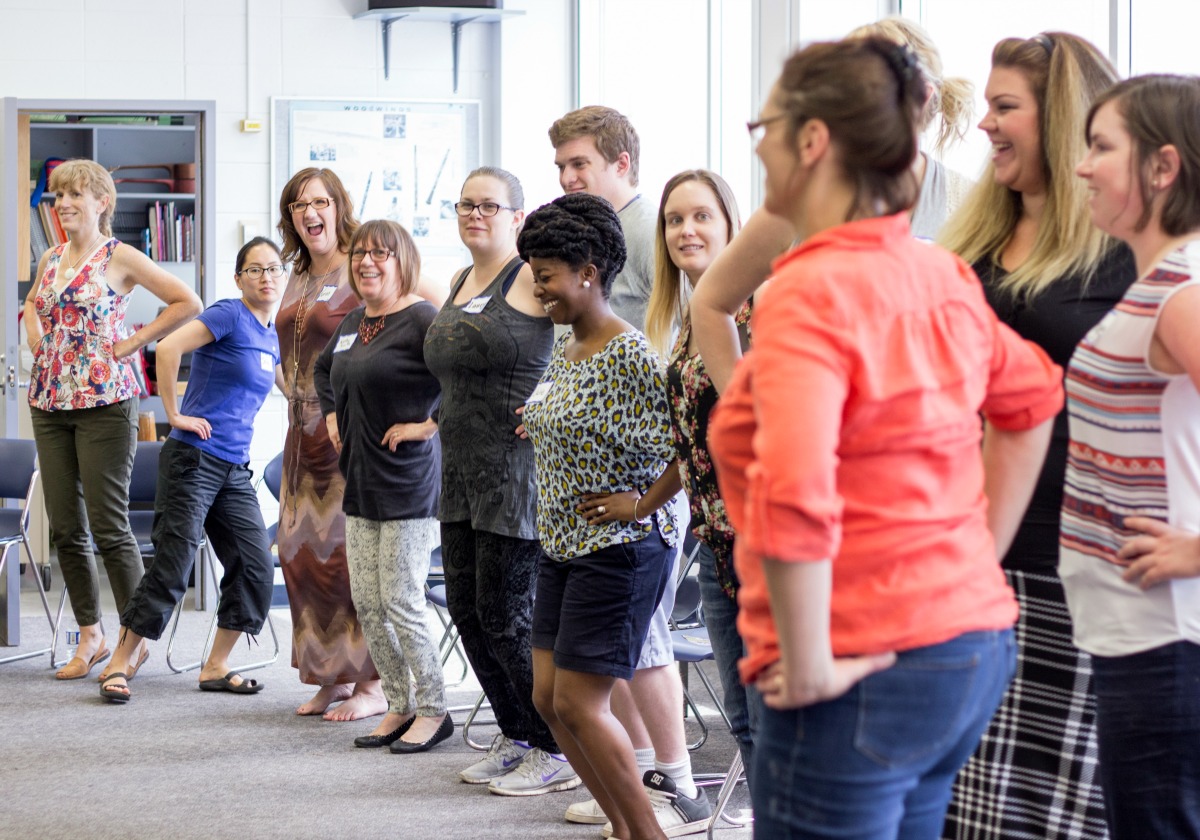A two-part professional development workshop focused on integrating First Nations, Métis and Inuit music and culture into elementary music education had a successful launch at the University of Alberta’s Faculty of Education this June and is expected to return to campus in the fall 2016 term.
At the recent workshop, current Education graduate student Nicole Schutz and alumna Laurel Nikolai (MEd ‘09) showed more than 20 local music teachers and 10 current students in the elementary education program different ways to weave Indigenous music and culture into their kindergarten to Grade 6 classrooms by making flutes and teaching them how to play songs.
Learning by doing
The hands-on workshop encouraged participants to decorate and play their flutes, much like they would with their students. Schutz, who is Métis herself, said that making the workshop as interactive as possible was a deliberate choice.
“We move, sing and dance all the time with our students,” said Schutz. “Why not do it with the First music of Canada? We want them to feel it and know it through the way it is supposed to be done.”
Both Schutz and Nikolai’s personal experiences teaching music in schools with large First Nations, Métis and Inuit populations provided a frame of reference when designing the workshop. It also illustrated the need to educate teachers on how to integrate First Nations, Métis and Inuit content and perspectives into the curriculum.
“As music teachers and elementary teachers, we learn through doing it and experiencing the songs and dance. We really want to connect to this through stories and [enable students to] have their own stories of making the instruments that they are putting love and time into, then pass these stories on,” said Nikolai.
“It is our job as educators to do as much as we can, share as much as we can, find accessible resources and people who can pass teachings and experience onto us so we can be comfortably educated to share this with our students,” she adds.
Responding to the Calls to Action
Workshop participants point to the Truth and Reconciliation Commission of Canada’s final report, released last year, as well as the provincial government’s promise to focus more on including Indigenous culture and history into Alberta’s curriculum as two reasons—among many—why professional development like this is needed.
“With the release of the 94 Calls to Action from the Truth and Reconciliation Commission, this workshop is a response to some of those calls by learning more about Indigenous ways of knowing and being which will translate to their students,” explained event collaborator Jeremy Albert, who is a First Nations, Métis and Inuit consultant with Edmonton Public Schools (EPSB).
“We’re looking to build from here and get these teachings into our schools so our First Nations, Métis and Inuit and non-Indigenous students can be exposed to this education.”
The importance of good materials
As well as receiving a lesson in making, painting and playing Indigenous flutes, workshop participants also received a walk-through of an Edukit for music teachers, developed by EPSB. The kit consists of detailed lesson plans including songs, dances, picture books, poems, and stories that can be used throughout the school year.
“We’re crying out for materials and understanding to bring this music to our students,” said Kathy Robinson, associate professor of elementary education and workshop facilitator.
All of the workshop facilitators expressed a desire for the workshop’s positive impact to spread to classrooms across Edmonton. Event collaborator and EPSB First Nations, Métis and Inuit consultant Holly Yuzicapi explained that learning about First Nations, Métis and Inuit art and culture could teach students another way to express themselves.
“Every culture has forms of expression—art, music, singing, dance—it’s really people having the ability to share feelings and stories,” said Yuzicapi.
“You hear people say ‘I’m dancing for healing’, or there is history and significance behind certain songs or stories. When we turn to those things, we are acknowledging expression,” she explained. “When we deal with traumatic things in our life, we can turn to art to help us express feelings, but we don’t teach it that way. When you think about all of our cultural songs, the songwriter is sharing their feelings. So, technically everyone is a songwriter, a dancer and an artist.”
The EPSB Edukit will be available for loan at the H.T. Coutts Education Library. Part two of the workshop, to be led by Elder Francis Whiskeyjack, is expected to take place at UAlberta in the fall term and will focus on drumming and drum-making. To learn more about the course, contact Laurel Nikolai or Nicole Schutz.
Feature image: Participants in the First Nations, Métis and Inuit Elementary Music Teacher Professional Development Workshop try out some new dance moves.
